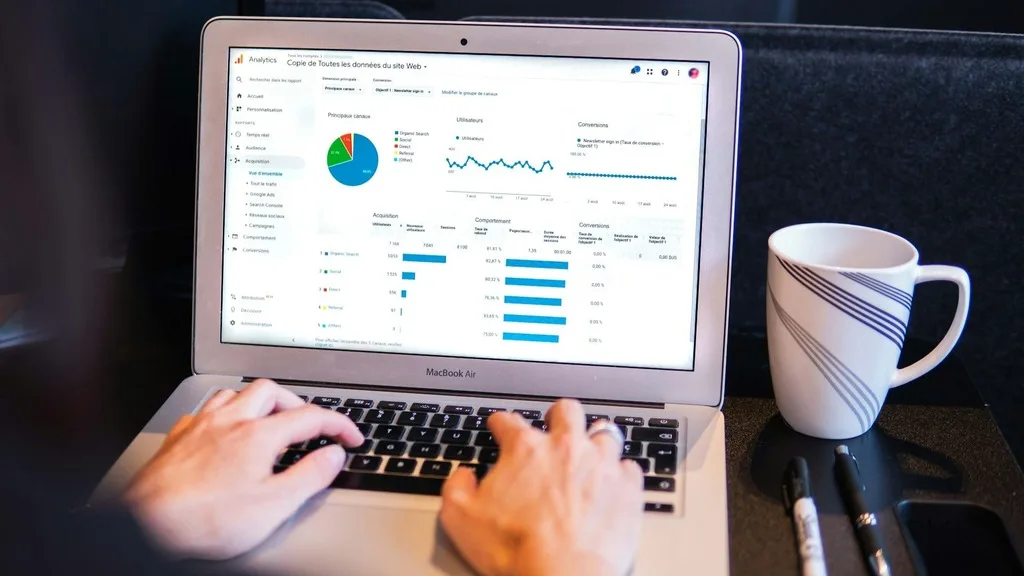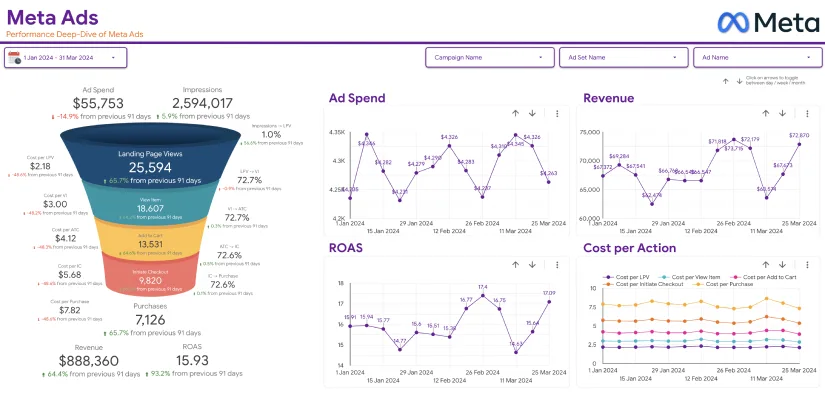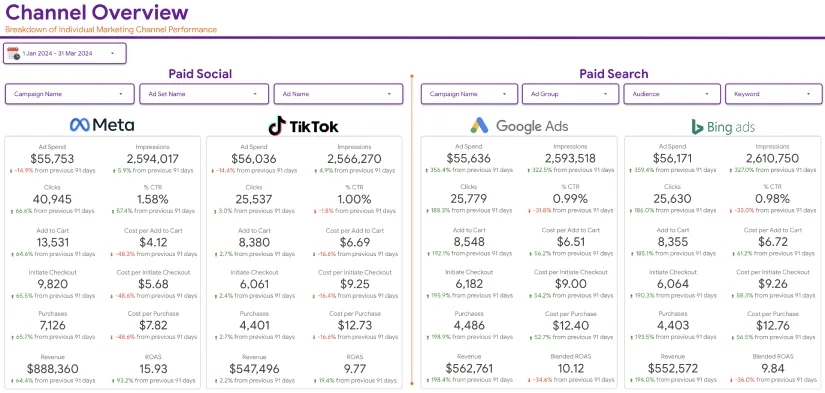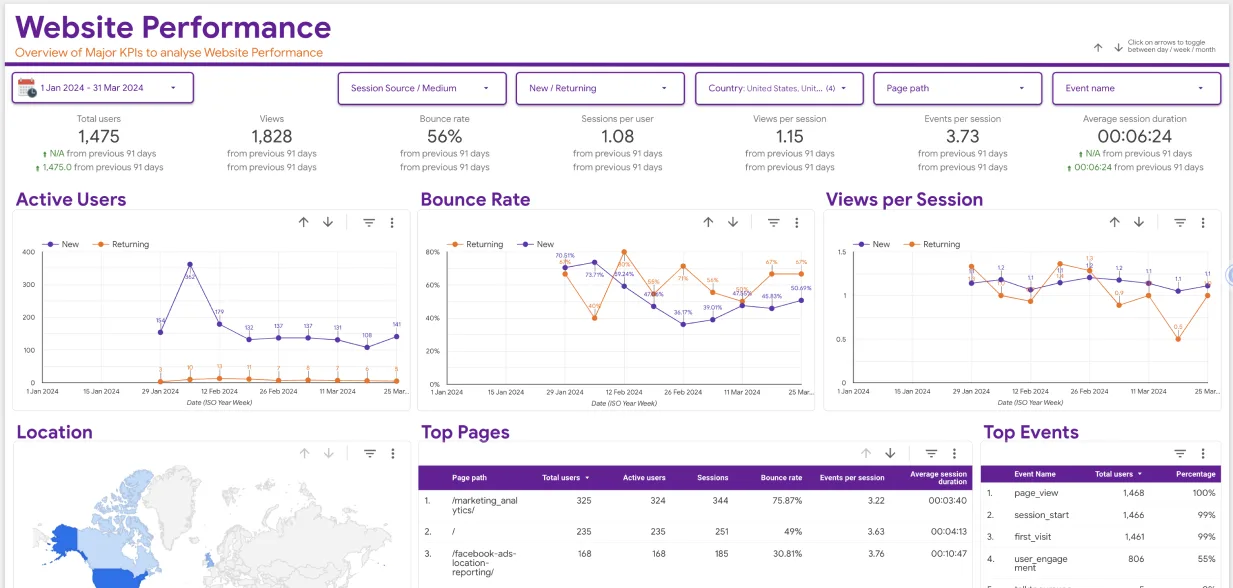Have you tried Google analytics free vs paid versions? Is the paid version worth the investment? The word “free” is often enticing, particularly regarding resources that promise to enhance your business insights. But is Google Analytics truly as free as it seems when you look closer? The hidden expenses of Google Analytics 4, which can be costly in money and effort, are a problem for many customers.
Often, the full cost of employing Google Analytics is not apparent until much later in the setup and upkeep process. From the hours required to understand its intricate structure to the potential requirement to pay add-ons to obtain deeper insights, these hidden expenses can mount up.
Companies that engage in long-term product growth can gain a competitive edge by utilizing analytics solutions. However, not every business has the funds to purchase an analytics tool. As it happens, some businesses benefit more from employing free analytics systems than others. Which group would you fit in with? This article will look at Google analytics paid vs free versions. In addition, you will learn about their features and distinctiveness.
What are Google Analytics?
Google Analytics is a web analytic program that offers a wide range of analytical tools for understanding the effectiveness of marketing campaigns and websites. It offers data and fundamental analytical capabilities for marketing and search engine optimization. Regardless of whether they operate with small or large firms, anyone with a Google account can access this free tool, which is a component of the Google Marketing Platform.
Google Analytics monitors website performance and gathers visitor data. In addition to tracking goal completions (like purchases or adding items to carts), evaluating the effectiveness of marketing campaigns, identifying trends and patterns in user involvement, and obtaining additional visitor data like demographics can assist organizations in identifying the primary sources of user traffic.
How does Google Analytics Work?

To get started with Google Analytics, you need to create an account. You can start the entire process through Google’s website (https://marketingplatform.google.com/about/analytics/). Next, you need to add a global site tag to your website to get any data from it into Google Analytics. You will get a tracking code for Google Analytics, enabling you to track your website. The software will begin gathering information and creating reports with dimensions and metrics.
A metric is anything that is numerically measurable, such as the number of visitors or the duration of time spent on the website. A dimension divides the data into smaller portions, representing the number of people who visited the website through Google AdWords, or the amount of time spent on a certain page.
Why do businesses need Google Analytics?
Before exploring Google Analytics free vs paid versions, let’s look at the reasons behind businesses using Google Analytics. Previously, entrepreneurs could see their clients in person. That brief meeting and greeting yielded invaluable information. It would be possible to determine their age, background, and preferences.
However, things have changed. Every day, more people are exchanging their shopping carts for mousepads. Known faces have turned into faceless consumers. Google Analytics is a useful tool that offers deeper insights into the behavior of your online or digital customers and aids in understanding who they are.
Is Google Analytics Free?
Yes, Google Analytics is free. It provides valuable insights into website traffic, user behavior, and engagement. It allows companies to monitor visitors, gauge performance, and refine marketing tactics—all for free. With seamless integration, you can track important metrics such as page views, session length, and traffic sources. As a blogger, small business owner, or marketer, Google Analytics provides you with the insights necessary to make your website more effective.
Google Analytics Premium vs Free
To dismiss any confusion, Google Analytics offers a free and subscription service, operating on a hybrid model. Therefore, the good news for small business owners is that you can use this service for free. Nevertheless, you can use the premium version for more sophisticated features. When comparing Google Analytics Premium vs Free, the key differences lie in advanced functionalities, data limits, and support. Google Analytics Standard is the free version, while Google Analytics 360 is the paid version. Let’s explore the features of Google Analytics before diving into the premium options.
Features of Google Analytics
Here is a quick rundown of the web analytics features in the Google Analytics free edition.

Predictive analytics
Google Analytics machine learning models analyze first-party consent data to forecast how consumers will engage with your product. By using these insightful observations, you may adjust to users’ demands and increase conversions.
Engagement reports
This Google Analytics tool allows you to create reports tailored to user involvement. Find out what steps people take, how marketing tactics result in conversions, or where they connect with your product the most.
Advertising snapshot
Google Analytics helps develop a marketing plan by generating an overview of advertising requirements. In addition to the search console and Google Ads, Google Analytics can provide deeper insights into campaign performance.
Google Analytics 360
Larger businesses and organizations with more demanding analytics requirements are suited for Google Analytics 360, the premium, subscription-based edition. Comparing the Google Analytics free vs paid version reveals more features and functionalities. It offers improved data processing, additional customization choices, sophisticated product linkages with other Google Marketing Platform offerings, and committed support. Google Analytics 360 has an annual fee of $50,000.
Why Use Google Analytics Premium?
It’s easy to see why many business owners stick with Google Analytics’ free edition—it offers valuable data and covers a wide range of analytics needs. However, for businesses that require deeper insights, higher data limits, and advanced features, the question arises: Why use Google Analytics Premium? What additional benefits does Google Analytics 360 provide?
Hit Limit
With almost a billion hits per month (and even more at an additional cost), Google Analytics 360 has much higher hit limits than the free version, which only allows a 10 million hit limit. Google Analytics notifies you when you cross the 10-million-hit limit and provides you with many options for resolving the issue:
Advanced Analytics
Google Analytics 360 offers additional features, including BigQuery, attribution modeling, and double-click manager integration. As a marketer, you can gather useful data to help your business better identify and cater to your target market.
Number of views per Property

A developing company might find the free version of Google Analytics extremely limited, as it only allows for 50 properties and 25 views per property. Nevertheless, Google Analytics 360 offers over 50 Properties and 400 views for each property. With more property views per property, businesses can be more inventive when cross-domain tracking, filtering, and slicing data from all their websites, apps, and other properties.
Bounce Rate in GA4
Bounce Rate in GA4 is measured differently from Universal Analytics. Instead of tracking single-page visits, Bounce Rate in GA4 is defined as the percentage of sessions that don’t result in engagement, such as scrolling, clicking, or spending more than 10 seconds on a page. This refined metric helps marketers understand user behavior more effectively.
Integrations
Integrations will undoubtedly surpass this as the second most important justification for upgrading to Google Analytics 360. If you intend to use any tool, then Google Analytics 360 is the best option, as it offers several integrations. It allows integration into several applications, including:
- Search Ads 360
- Campaign manager
- SalesForce
- BigQuery
Modeling of attribution
There are several ways to evaluate the effectiveness of traffic sources in Google Analytics 360. Advertising channel analysis is possible using a new data-driven attribution approach primarily created for Google Analytics 360. The traditional position-based attribution models found in Google Analytics’ free edition often overstate or understate the importance of channels.
Google Analytics Free vs Paid – Key Differences
Cost
With your Google account, you can access the Analytics platform for free. However, when it comes to Google Analytics pricing, the premium version, Google Analytics 360, starts at around $150,000 per year. While it offers advanced features, the high cost makes it less practical for small businesses, which is why many stick with the free version.
Sampling abilities
Google Analytics might arbitrarily sample a subset of your traffic information because it must handle and interpret a massive amount of data very quickly. However, it’s possible that this sample doesn’t fairly represent your data’s actual characteristics. Sampling for the free version begins after 500k sessions. About 100 million sessions are permitted for Google Analytics 360 accounts, ensuring accurate data.
Hit limit
Any activity on the web site that transmits data for Google to review is referred to as a hit. Your data may become inconsistent if the hit limit is exceeded. The first level of Google Analytics 360 has a 1 billion hit restriction, while the free edition has a 10 million hit limit each month. The reports you produce will be more accurate if you gather more data.
Data Freshness

It represents how current the data report is. Any modifications you make to your site will appear in your Google Analytics 360 report in less than four hours. The free version may take up to 24 hours to reflect because data freshness is not guaranteed.
Dimensions
Compared to Google Analytics, which offers only 20, the paid version offers over 180 configurable metrics and dimensions. These metrics are defined by the user and are not defined by Google Analytics automatically. Consequently, Google Analytics 360 offers greater adaptability and inventiveness.
Training and Support
Another important Google Analytics free vs paid difference is their support and training. Google Analytics must provide dedicated support besides a personalized help center and community forums. On several platforms, Google also provides a free documentation course. However, Google Analytics 360 includes a comprehensive customer care package.
Integration
Google products like Search Console, Ad Exchange, Google Ads, and AdSense are all integrated with Google Analytics. Campaign Manager, SA360, DV360, and other 360 versions are among the usual tools that Google Analytics 360 interacts with.
Google Analytics Premium: Is It Worth the Upgrade?
Upgrading to Google Analytics Premium (Google Analytics 360) depends on your business needs. If you’re handling high traffic, require advanced insights, or need dedicated support, the premium version can be a game-changer. It offers unsampled data, BigQuery integration, and custom funnels, making it ideal for enterprises. However, for small to mid-sized businesses, the free version is often enough. The high cost of Google Analytics 360 means it’s best suited for companies that rely heavily on data-driven decisions.
Conclusion
Understanding the key differences between Google Analytics free vs paid versions will help determine your business’s needs. Numerous factors should be considered when assessing the value of Google Analytics and Google Analytics Premium Plans. You should examine the cost, complexity, analytics requirements, privacy issues, and data retention. Additionally, understanding Google Tag Manager vs Google Analytics can provide insights into how both tools complement each other for tracking and data management.






